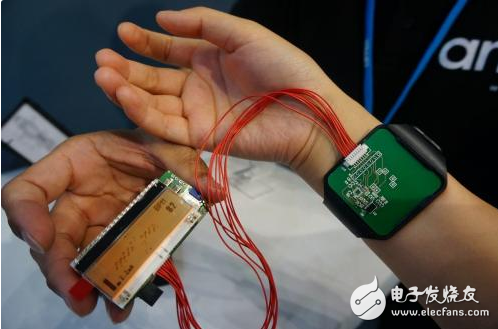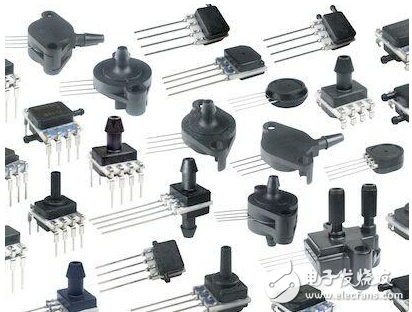Since the birth of the sensor in the 1860s, it has been more than 150 years. Now with the rapid development of the Internet of Things industry, more and higher requirements are put forward for sensor technology. The McKinsey report pointed out that by 2025, the economic benefits brought by the Internet of Things will be between 2.7 trillion and 6.2 trillion US dollars. Sensors, as an important entry point for data acquisition of the Internet of Things sensing layer, are bound to be connected. In the years that followed, there was an explosive growth.
First of all, the author first takes everyone to understand the basic concept of the sensor. The sensor is a detecting device composed of a sensitive component and a conversion component, can sense the measured, and can convert the detected and sensed information into an electrical signal (voltage, current, frequency or phase, etc.) according to a certain rule. Formal output, which ultimately provides data sources for data analysis and artificial intelligence for IoT applications.
What are the research directions of the Internet of Things wave of incoming sensor technology?
1, wireless sensor (UGS)

Wireless sensor

Whether in smart transportation, smart cities, smart agriculture, industrial Internet of Things, or field disaster prevention, humans want to achieve a comprehensive perception of the physical world. First, ensure that the data obtained by the perception layer is comprehensive and accurate. It is said that the IoT system needs to arrange a large number of sensors according to the application field and specific needs, and even if it is needed, it will be deployed in a large-scale manner by means of aircraft spreading, so that the sensor and the Internet of Things system cannot be physically connected. In this way, a wireless channel must be used to transmit data and communications.

Smart sensor
2, smart sensor
The smart sensor integrates the sensor and the microprocessor with embedded technology, making it an intelligent data terminal device with environment awareness, data processing, intelligent control and data communication functions. It has self-learning, self-diagnosis and self-compensation capabilities, composite sensing capabilities, and flexible communication capabilities. In this way, the data that the sensor feeds back to the IoT system when it senses the physical world will be more accurate and comprehensive, and achieve the purpose of accurate perception.
In microelectronics, the smaller the feature size of an integrated circuit, the higher the integration of the device, the faster the running speed and the better the performance. The smaller the size of the sensor in the IoT system, the more the system is arranged. More convenient and better performance.
MEMS (Micro Electro Mechanical Systems), which utilizes traditional semiconductor processes and materials, combines miniature sensors, microactuators, micromechanical mechanisms, and signal processing and control circuits until the interface, communication, and power supply are integrated into a single device or system. This small-volume, low-cost, integrated, and intelligent sensing system is an important development direction for future sensors and the core of the Internet of Things. Therefore, the field of MEMS sensors has become the top priority of related enterprise layouts.
3, wireless ad hoc network (Ad hoc)

Wireless ad hoc network
Speaking of this wireless ad hoc network, many readers may be a bit stranger, but its importance cannot be ignored. Compared with the traditional network, the wireless ad hoc network adopts a "peer-to-peer" mobile communication mode that does not require a base station, and all networked devices in the network can be dynamically networked during the mobile process.
What are the advantages of this networking method?
First of all, one of the advantages is that there is no central control node, which means that the network does not have a packet routing and forwarding router; in addition, in the working process, after one of the nodes leaves the network, the network topology will dynamically change to form a network. New topology. This networking technology is highly regarded in the military field and in the field of car networking.
In the end, the three research directions of sensor technology will be merged to promote the birth of wireless sensor networks (WSN).
What are the important sensor suppliers at home and abroad?
Foreign well-known sensor companies:
Bosch, STMicroelectronics, Honeywell, Freescale, Texas Instruments, ADI, Lou's Electronics, Philips, Infineon, Hitachi, etc.
China's well-known sensor companies:
Hanwei Electronics, Dali Technology, Huagong Technology, Yuanwang Valley, Naiwei Technology, Gaode Infrared, Goer Shares, AVIC Electric Survey, Shield Environmental, Silan Micro and so on.
At present, the global sensor market is dominated by several leading companies in the United States, Japan and Germany. There are more than 22,000 kinds of sensors in the world. China has about 7,000 kinds of conventional types and varieties, and more than 90% of high-end sensors still rely heavily on imports. Digital, intelligent and miniaturized sensors are seriously lacking.
China's three major sensor production bases
At present, there are three major sensor production bases in China, namely: Anhui base, which mainly focuses on establishing power and photosensitive economies; Shaanxi Sensitive Technology Industry Group Co., Ltd. mainly focuses on establishing voltage-sensitive, heat-sensitive, and automotive electronics economies of scale. The target; Heilongjiang base mainly aims to establish a gas and humidity sensitive economies.
Affected by the huge prospects of sensors, China's sensor companies are also increasing. In terms of related technologies, Chinese enterprises have basically possessed the research and development capabilities of medium and low-end sensors, and are gradually expanding into high-end fields.
The gap between China and the United States, Japan and Germany in the sensor field provides space for our growth and also points the way. In the era of the Internet of Things, the market is stimulating the huge demand for sensors, and the participation of many local companies, the Chinese sensor industry is expected to achieve impressive results.
Audio Connector,Male Female Connector Audio,Audio Plug Jack Connector,Female Audio Connector
Dongguan Swan Electronic Technology Co., Ltd , https://www.swanconnector.com